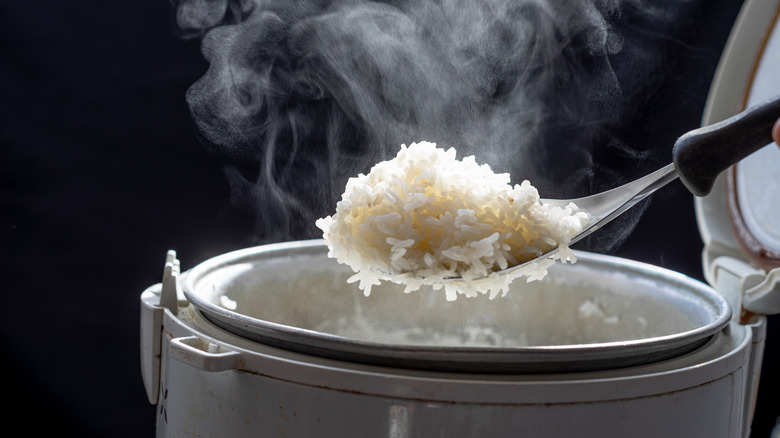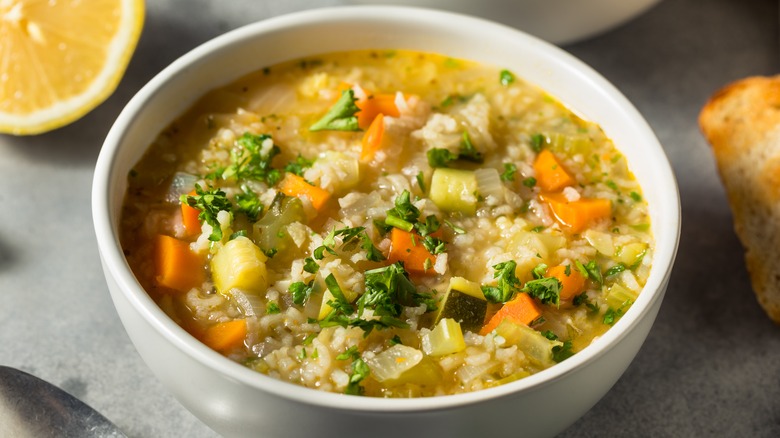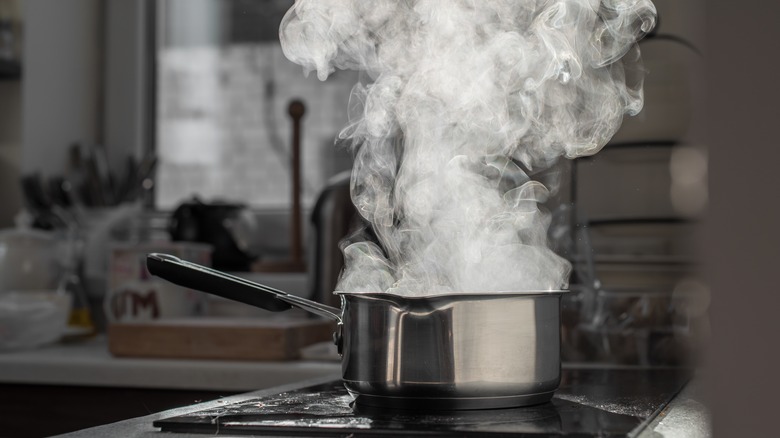How To Add Rice To Soup And Avoid A Mushy Mess
From savory gukbap to creamy chicken and wild rice, there's a wide variety of delicious rice-based soups to eat. While these steamy mixtures are full of wholesome flavors and satisfying textures, there is one common problem with these particular bowls that can make them not so appealing. Namely, when rice is left in the broth for too long, it absorbs too much liquid and becomes extra-bloated and soft. This leaves the soup looking more like a stew as all that delicious savory liquid gets soaked into the rice.
This issue makes for a soup lacking in appealing textures, but there is a quick and easy fix to this frustrating problem. To avoid a mushy mess, here's how you should be adding rice to soup instead: Cook your rice separately from the rest of the soup and add the grains directly into each bowl as you serve. Despite whatever your recipe instructions say, it's best to assemble rice-based soups this way to avoid over-absorption.
The best rice varieties for your soup
A lot of soup recipes suggest cooking rice directly in the broth. While this method of preparation can make for more flavorful rice, the loss of textural quality might not be worth the payoff. If you prefer to cook rice in your soup broth anyway, long-grain rice varieties like Basmati or Jasmine work best as they have an easier time retaining their shape. Be prepared to make more broth or stock since the rice will absorb quite a bit of the liquid.
Any variety of rice can easily become oversaturated with liquids in a soup, and the same can happen with pasta like orzo, too. Cooking grains and pasta separately before adding them to soup becomes especially useful when it's time to store leftovers. Rice will become mushy if you leave it in broth overnight. So, next time you're simmering up a pot of soup, don't blindly follow the recipe. Think ahead instead, and cook the rice separately.
Another soup-making mistake to avoid a mushy mess
Aside from cooking rice in the broth, there are a lot of other common soup mistakes you might be making that lead to an overly mushy bowl. For starters, if your vegetables are ending up just as soft as your rice, or your protein is way too dry, you might be cooking your soup at a temperature that's too high. You should be simmering soup low and slow, and never boiling. This allows all your vegetables to soften up slowly and evenly while developing flavor.
Now if you still accidentally make a soup where the ingredients are mushy, don't throw away the entire batch. You can always throw the mushy bits in a blender and use the purée to thicken up the rest of your soup. This saves those initial ingredients and also packs the soup with more flavor, so it's the perfect happy accident. Still, it's always best to avoid these issues in the first place, so think twice before cooking your rice in broth. The peace of mind alone might be worth the switch.


